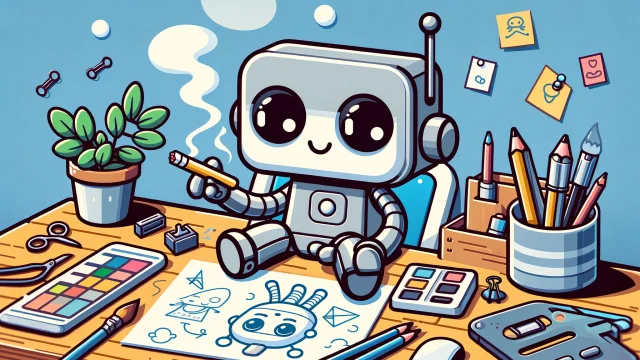Dragon Ball Revolution: Exploring the Evolution of the Franchise
- Dragon Ball Revolution: Exploring the Evolution of the Franchise
- 1. The Revolutionary Impact of Dragon Ball
- 2. Dragon Ball Revolution as a Concept
- 3. Fan Projects: The Spirit of Revolution
- 4. Dragon Ball in the Gaming World: A Revolutionary Journey
- 5. Revolution in Themes and Narratives
- 6. The Future of Dragon Ball: What Could Revolution Mean?
- 7. Why Dragon Ball Revolution Matters
- 8. Conclusion: Embracing the Revolution
Dragon Ball Revolution: Exploring the Evolution of the Franchise
The term Dragon Ball Revolution resonates with the idea of transformation and growth—a concept deeply rooted in the Dragon Ball franchise. From its humble beginnings as a manga in 1984 to its expansive multimedia empire, Dragon Ball has undergone a revolutionary journey that continues to captivate audiences worldwide. Whether referring to fan-made projects, creative reinterpretations, or the ongoing evolution of the series, Dragon Ball Revolution symbolizes the franchise’s enduring ability to adapt, innovate, and inspire.
This article delves into the potential meanings and implications of Dragon Ball Revolution, examining its role in fan culture, gaming, and the future of the franchise.
1. The Revolutionary Impact of Dragon Ball
1.1 The Birth of a Cultural Phenomenon
- The original Dragon Ball manga by Akira Toriyama debuted in 1984, serialized in Weekly Shōnen Jump.
- Its blend of action, humor, and mythological elements revolutionized the shōnen genre, laying the foundation for countless other series.
1.2 Evolution Through Eras
- Dragon Ball Z introduced higher stakes, intense battles, and a shift in tone that appealed to a broader, global audience.
- Subsequent adaptations like Dragon Ball Super and movies like Dragon Ball Super: Broly showcased the series’ ability to evolve while staying true to its core themes.
2. Dragon Ball Revolution as a Concept
2.1 Fan Interpretations
- For fans, Dragon Ball Revolution represents:
- The unending innovation in storytelling and animation.
- Fan-driven projects that reimagine or enhance the series.
- A call for new narratives that explore untapped potential within the Dragon Ball universe.
2.2 Revolution in Storytelling
- The introduction of multiverses in Dragon Ball Super symbolizes a revolutionary expansion of the franchise’s storytelling canvas, opening the door to limitless possibilities.
3. Fan Projects: The Spirit of Revolution
3.1 Fan Creations
- Fans have embraced the idea of Dragon Ball Revolution through:
- Fan-made animations: Projects that reimagine iconic battles or create entirely new ones.
- Custom video games: Mods and original fan games that introduce new characters and mechanics.
3.2 Dragon Ball Revolution Fan Games
- Titles like Dragon Ball Revolution (a hypothetical fan game concept) embody a creative reimagining of the franchise’s mechanics, often focusing on deeper RPG elements or improved combat systems.
3.3 Revolution in Visual Art
- Fan art and animations often depict:
- New transformations, such as “Super Saiyan Revolution” forms.
- Original characters and timelines, adding depth to the franchise.
4. Dragon Ball in the Gaming World: A Revolutionary Journey
4.1 Evolution of Dragon Ball Games
- The Dragon Ball gaming journey began with the release of Dragon Ball: Dragon Daihikyō in 1986.
- Over time, games like Dragon Ball Z: Budokai Tenkaichi, Dragon Ball Xenoverse, and Dragon Ball FighterZ introduced revolutionary gameplay mechanics and visuals.
4.2 Potential for Future Games
- A hypothetical Dragon Ball Revolution game could focus on:
- Open-world exploration with seamless integration of combat.
- Customizable storylines, allowing players to shape the Dragon Ball universe.
- Advanced AI-driven battles that replicate the feel of anime combat.
5. Revolution in Themes and Narratives
5.1 Beyond Power Levels
- The series has consistently revolved around escalating power levels and epic battles, but future narratives could revolutionize the franchise by:
- Exploring deeper character development.
- Addressing philosophical themes like the cost of power or the meaning of heroism.
5.2 Expanding the Universe
- With the introduction of multiverses and characters like Jiren, Hit, and Zamasu, the Dragon Ball universe has significantly expanded, offering new opportunities for revolutionary story arcs.
6. The Future of Dragon Ball: What Could Revolution Mean?
6.1 New Media Formats
- As technology advances, Dragon Ball could embrace revolutionary formats such as virtual reality experiences or interactive storytelling.
6.2 Original Content
- Potential new series, such as Dragon Ball Revolution, could focus on:
- The origins of the Saiyans or Namekians.
- Alternate universes and what-if scenarios.
- Post-Dragon Ball Super storylines that explore Goku and Vegeta’s ongoing journeys.
6.3 Broader Inclusivity
- Emphasizing diverse characters and perspectives within the Dragon Ball universe could reflect the global fanbase more inclusively.
7. Why Dragon Ball Revolution Matters
7.1 A Symbol of Adaptation
- The term embodies the franchise’s ability to stay relevant and resonate with new generations.
7.2 Connecting Fans
- It fosters community engagement, inspiring fans to contribute their ideas, whether through art, stories, or gaming.
7.3 Celebrating Legacy
- A Dragon Ball Revolution acknowledges the series’ rich history while paving the way for future innovations.
8. Conclusion: Embracing the Revolution
Whether through fan projects, new series, or advancements in gaming, Dragon Ball Revolution captures the essence of what makes the franchise timeless—its ability to grow, adapt, and inspire. As fans eagerly await the next evolution of Dragon Ball, the spirit of revolution ensures that the series will continue to thrive, energizing generations to come.
The Dragon Ball saga’s journey is far from over, and its revolutionary potential promises to keep fans captivated for years to come.

